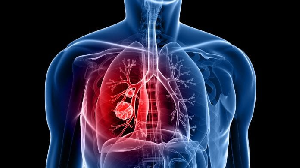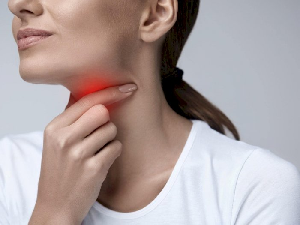
Janice M. Leung, Chen Xi Yang, Don D. Sin
European Respiratory Journal 2020; DOI: 10.1183/13993003.01261-2020
We recently reported that current smokers and those with COPD had higher airway epithelial cell expression of the angiotensin-converting enzyme-2 (ACE-2) viral entry receptor. We thus read with great interest the work of Russo et al. which proposes a mechanism for this finding, namely that this upregulation is mediated by nicotine exposure specifically through the α7 subtype of nicotine acetylcholine receptors (α7-nAChR). While exposure to increasing concentrations of nicotine caused epithelial cells to increase ACE-2 levels, subsequent gene silencing of α7-nAChR appeared to significantly dampen this response. A secondary transcriptome sequencing analysis of our cohort (consisting of 42 subjects who underwent bronchoscopy for epithelial cell brushings reveals evidence in support of this hypothesis. We found that airway epithelial cell expression of CHRNA7, encoding α7-nAChR, was significantly correlated with the expression of ACE2 (Pearson r=0.54, p=2.31×10−8). There was significantly higher CHRNA7 expression in those with COPD (2.75±0.73 versus 2.14±0.43 in those without COPD, p=1.47×10−4), with a trend towards higher expression in current smokers compared to former and never smokers (2.86±0.92 in current smokers, 2.35±0.57 in former smokers, and 2.27±0.45 in never smokers, p=6.16×10−2). CHRNA7 was also negatively correlated with forced expiratory volume in 1 s percent predicted (Pearson r=−0.37, p=2.83×10−4). Interestingly, CHRNA7 was positively if weakly correlated with body mass index (Pearson r=0.14, p=6.31×10−3), raising the intriguing possibility that nicotine receptor mediation of ACE-2 may also be related to why obese individuals have made up a considerable proportion of COVID-19 cases.

FIGURE 1
Transcriptome profiles generated through RNA-Seq of airway epithelial cells demonstrated a significant positive correlation between ACE2 and CHRNA7 expression.
Together, these data further help to characterise the connections between airway epithelial ACE-2, α7-nAChR, and the unique vulnerability of patients with COPD to severe COVID-19. α7-nAChR's widespread abundance in the human body, from neuronal tissue to immune cells to the lung and digestive tract, and its various roles in diseases such as schizophrenia, Alzheimer's disease, and Parkinson's disease has meant that considerable work has already been done to target α7-nAChR as a therapeutic modality. As an example, α7-nAChR antagonists for the purpose of smoking cessation have long been proposed and the idea of potentially repurposing these compounds for a pandemic with few therapeutic options currently available is certainly appealing. Whether α7-nAChR-selective antagonists such as methyllycaconitine and α-conotoxin can meaningfully alter ACE-2 expression to prevent SARS-CoV-2 entry into the airway epithelium seems the next logical investigation in our furious pursuit for better therapeutics.
Footnotes
-
Conflict of interest: Dr. Leung has nothing to disclose.
-
Conflict of interest: Ms. Yang has nothing to disclose.
-
Conflict of interest: Dr. Sin reports grants from Merck, personal fees from Sanofi-Aventis, personal fees from Regeneron, grants and personal fees from Boehringer Ingelheim, grants and personal fees from AstraZeneca, personal fees from Novartis, outside the submitted work.
- Received April 18, 2020.
- Copyright ©ERS 2020














